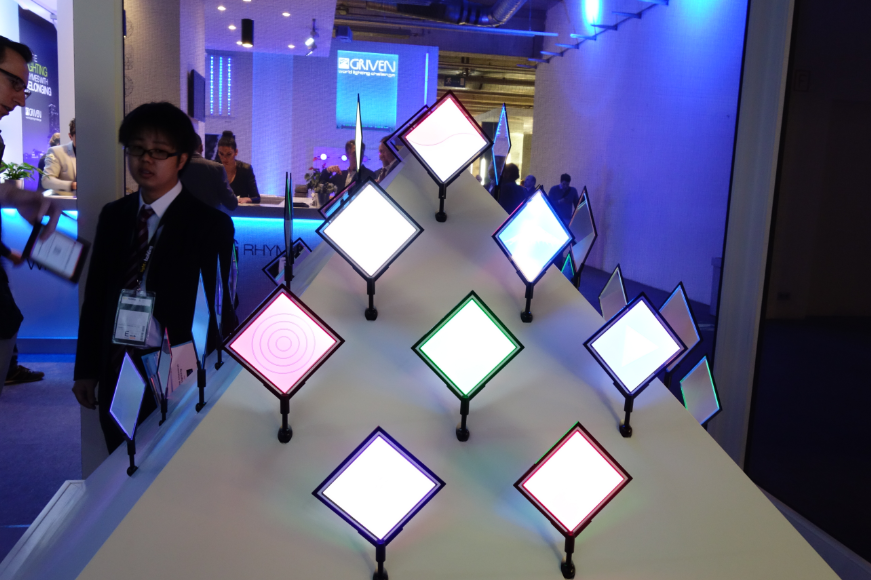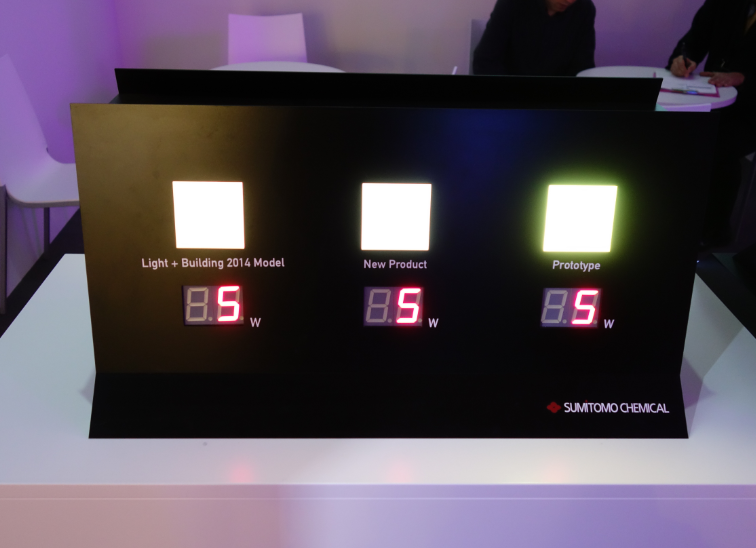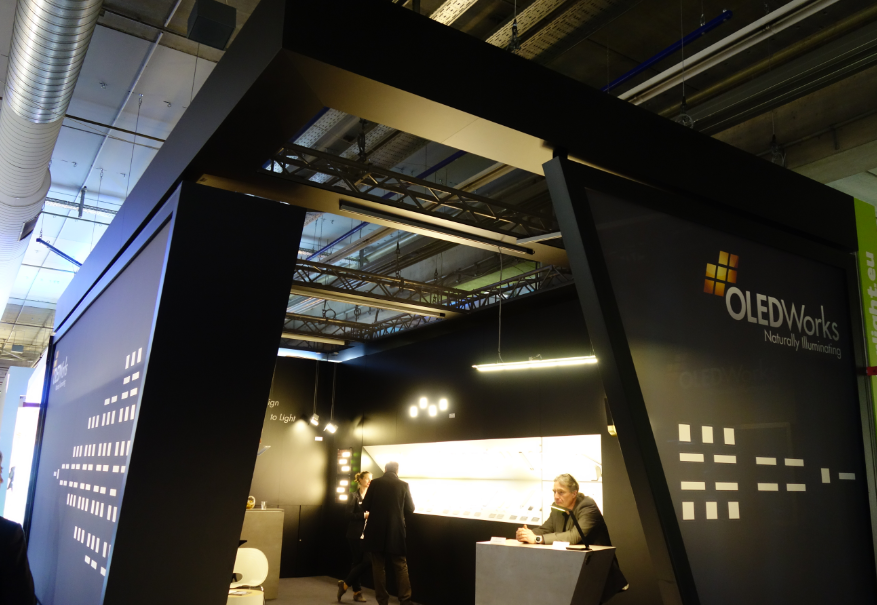As LED lighting technology matures and the price of LEDs lighting products crashes to ultra-low prices, where vendors are even giving products away as complimentary goods, many manufacturers are choosing to demonstrate OLED lighting technology and products at the Lighting + Building 2016. These new generation OLED light sources were the new highlights at the exhibition. Quite a few manufacturers showcased OLED technology this year but most of them were Korean, Japanese and European OLED manufacturers. The following are technology developments of these leading OLED companies this year.
LG Display
The stand of LD Display (LGD) was basking under a warm soft glow, irregular OLED panel lights were placed around the booth. The demonstrated OLED luminaires were no longer just prototypes as those shown in 2014, based on their appearance more products showcased this year were commercialized. LGD uses flexible substrate and package material for its flexible OLED panel lights, offering luminaire manufacturers more flexibility in luminaire design.
 |
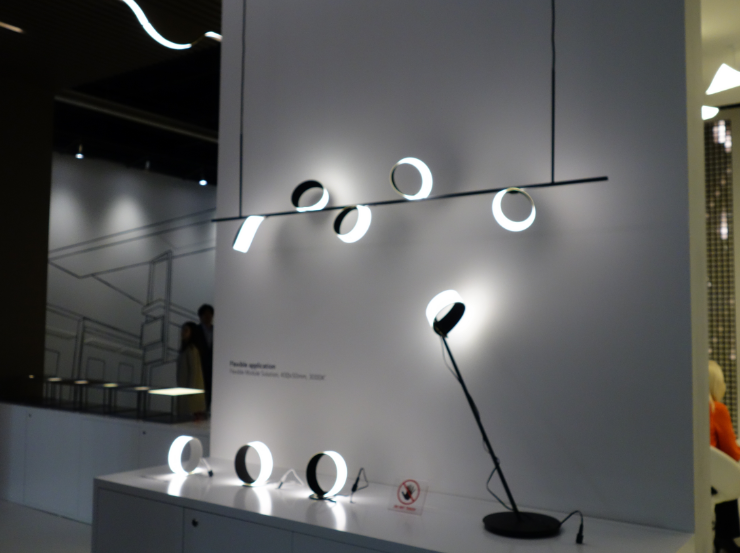 |
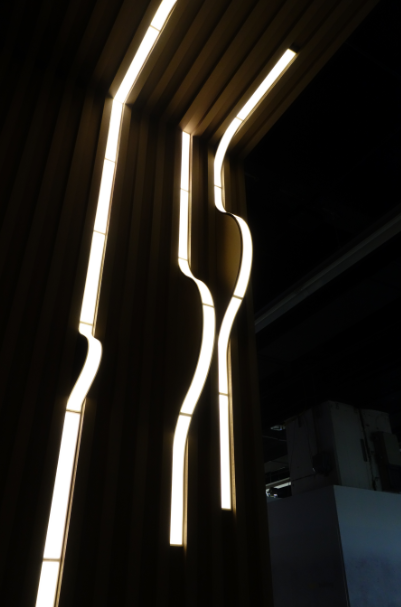 |
|
The brightness of OLED is sufficient for decorative lighting or lighting applications.(All Photos Courtesy of LEDinside) |
Although, LGD’s OLED panel luminous efficiency reached 80lm to 90lm/W, it still lags far behind LED lighting. Yet, its brightness is sufficient for decorative lighting or lighting applications. LGD has a clear market position for its OLED lighting, which aims the high-end decorative lighting market.
Therefore, many designers are in talks with LGD on OLED luminaire partnerships, including leading industrial designer Ingo Maurer.
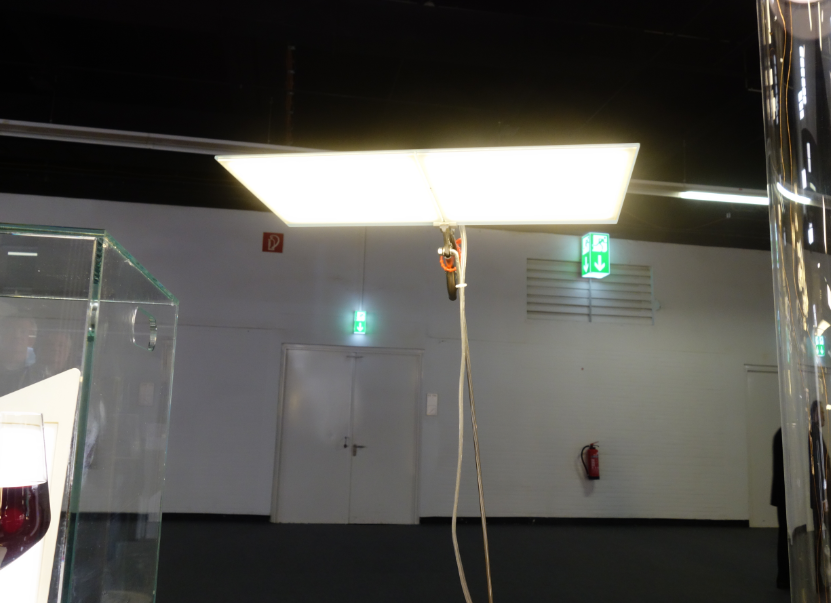 |
|
OLED luminaire designed by industrial designer Ingo Maurer. |
Costs has always been an issue for OLED lighting technology. The price of 1 cm2 of OLED was around US $100 or so in 2014, but LGD’s technology breakthroughs in the last few years has brought OLEDs to mass production phase and effectively lowered costs, said Joon Park ,Vice President, Head of OLED Lighting Sales & Marketing Division. Since LG restructure placed LG Chem’s under LG Display’s umbrella, the company’s OLED lighting business and production capacity could be expanded by using the group’s OLED display technology. Although, OLED for lighting applications are still being manufactured at the second generation production line, but the factory price can be as low as US $30 per cm2. Meanwhile, LGD also announced that the company will invest in a fifth generation manufacturing plant to expand the production capacity of OLED for lighting. The company’s initial input capacity will be 15,000 pieces of glass substrate per month. Therefore the price of OLED for lighting is expected to plunge in the future.
 |
|
The largest OLED panel from LGD reaches 330mm x 330mm. |
Sumitomo Chemical
Sumitomo Chemical has been a frequent participant at Light + Building, the leading Japanese manufacturer also showcased its latest technology this year. The company’s stand was decorated with colorful OLED panels. The decoration perfectly echoes its market position in OLED lighting that is to use OLED panels for decorative luminaire and lighting. The luminous efficiency of its full color RGB OLED panels approximately ranged from 5 lm/W and can only be used in decorative applications. The luminous efficiency for white OELD ranged from 30 to 40 lm/W, while prototype models reached 60 lm/W. Sumitomo Chemical’s OLED printing technology, in theory is very price competitive, but breakthroughs in the material is still required for production to reach economics of scale.
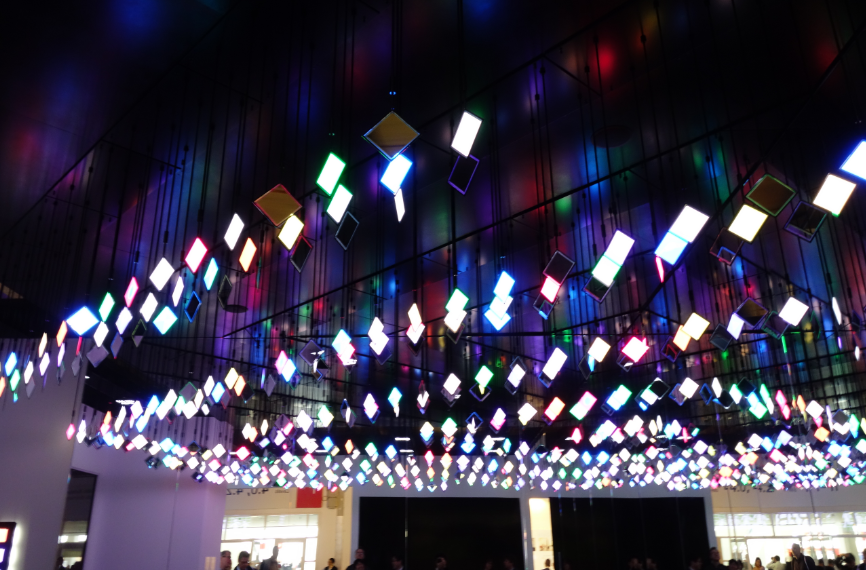 |
|
The company's OLED installation "OLED JARDIN", using Polymer OLED panels.
|
OLEDWorks
U.S. manufacturer OLEDWorks, who has completed the acquisition of Philips’ OLED assets and patents, also showcased its new OLED products. Currently, the standard OLED panel it manufactures is 120mm x 120mm with luminous efficiency ranging from 40 to 50 lm/W. The newest Brite 2 OLED panel light color rendering performance is 90 CRI and above, and color temperature options include 3,000K and 4,000K. The brightness of the OLED panel can reach 8,300 cd/m2 with luminous efficiency at 57 lm/W.
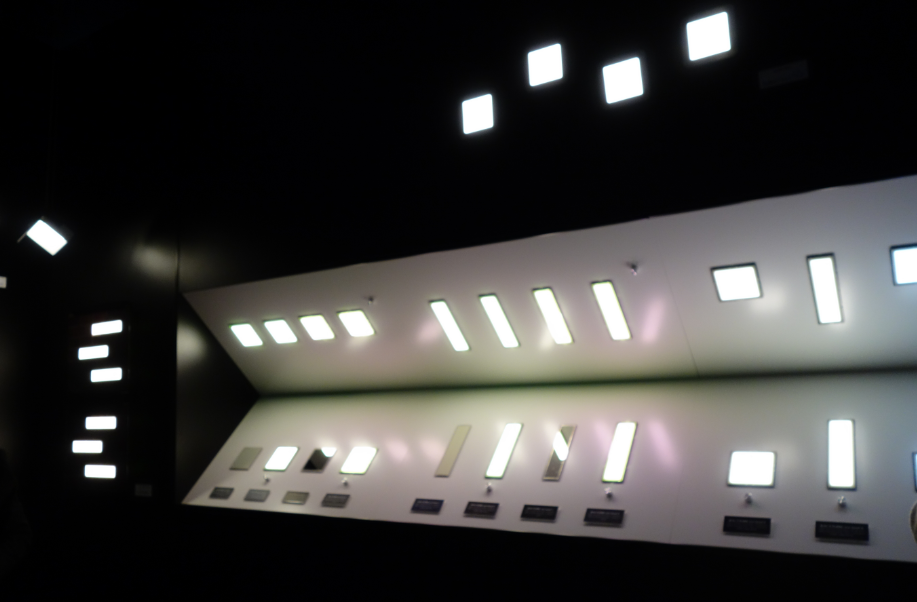 |
|
OLEDWorks offers square and rectangle panels for selection. |
LEDinside conclusion of OLED developments in lighting applications:
General lighting
The average luminous efficiency of mass produced OLED for general lighting is around 40 lm/W. Only very few leading manufacturers’ products are able to reach 80 to 90 lm/W. The cost gap between LED and OLED is huge, despite OLED’s dramatic price falls within the past two years. Currently the price of OLED ranges from US $60 to US $70 per square meter. Only LG Display claims it provides a lower prices ranged OLED panels costing US $20 to US $30.
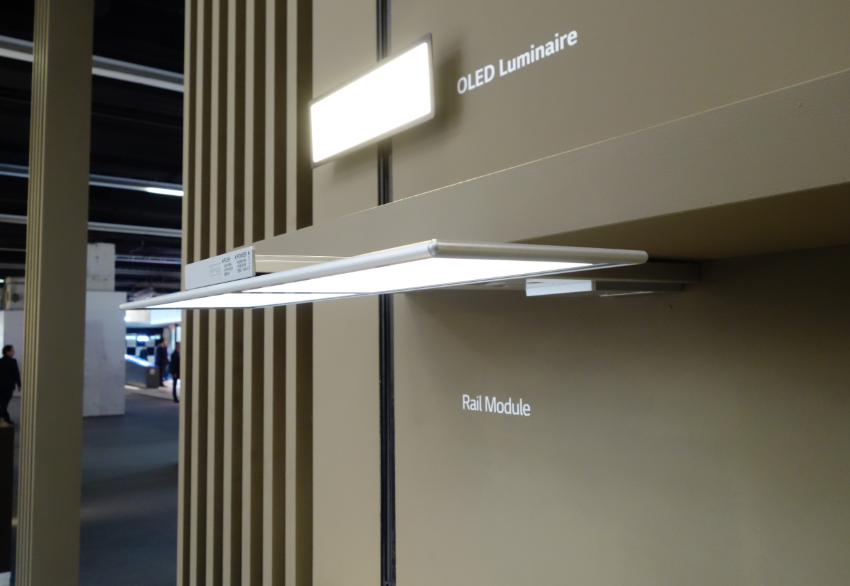 |
|
LG Display integrates OLED with furniture. |
OLED luminaire R&D previously was limited by luminous efficiency and OLED panel size, therefore OLED lighting could only be used as decorative light source, including table lamps or floor lamps. However, with breakthroughs in both the luminous efficiency and size in OLED technology more designers are developing commercial luminaires and other luminaire types can be found on the market. OLED’s thin, flexible features enables it to be integrated with furniture and can be embedded in different architectural materials as a light source.
However, OLED still has a long way to go in luminous efficiency and costs if it were to be used in general lighting. Its market position falls under designer luminaires, and decorative lightings. Still, it’s projected that the development of OLED displays is likely to copy that of mid-power LEDs, spreading first in the TV backlight market before entering the lighting market at a low price. There is no doubt that LED technology has matured in both luminous efficiency and prices, while OLED still has plenty of room for further improvements.
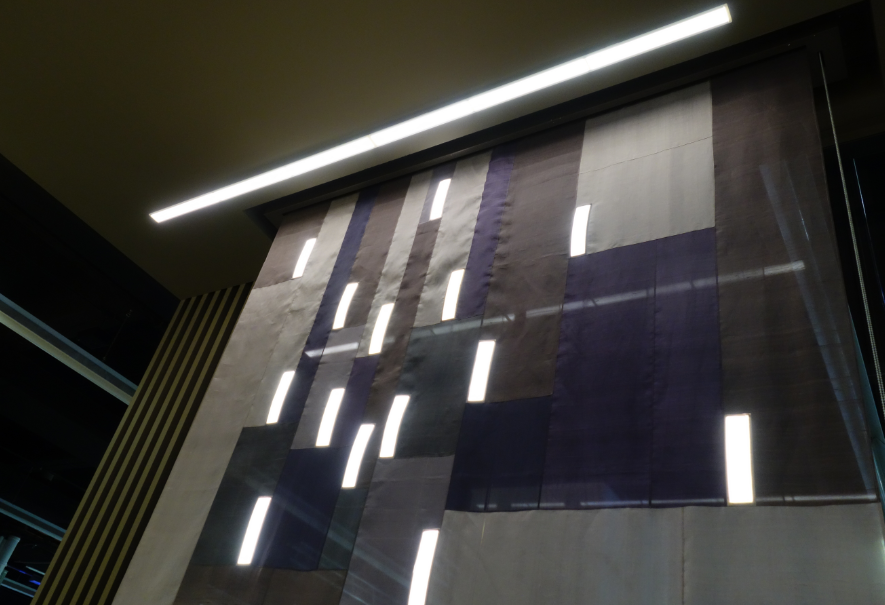 |
OLED embedded curtains from LG Display.
|
Automotive Lighting
As for automotive lighting, both LG Display and Osram showcased their OLED tail lights. Despite their costly price, the reliability of these products still needs to be tested. So why are many automotive manufacturers planning to try out this new technology?
Automotive design is pretty similar for same kind of car models, there are only slight differences in each model. Therefore making a breakthrough in exterior design to differentiate the style and appearance of the car from competitors is a priority of automotive manufacturers.
Flexibility of OLED allows new light distribution designs and largely reduces the size of car lamps. In terms of functionality, OLED tail lamps eliminate glare, too. Although, LEDs can achieve the same effect with optic design, the focus of automotive designers is taste. There will always a group of people on the market willing to pay more for aesthetics and sophisticated style. Due to technology limitations, OLED can only be used in tail lamps and interior lighting.
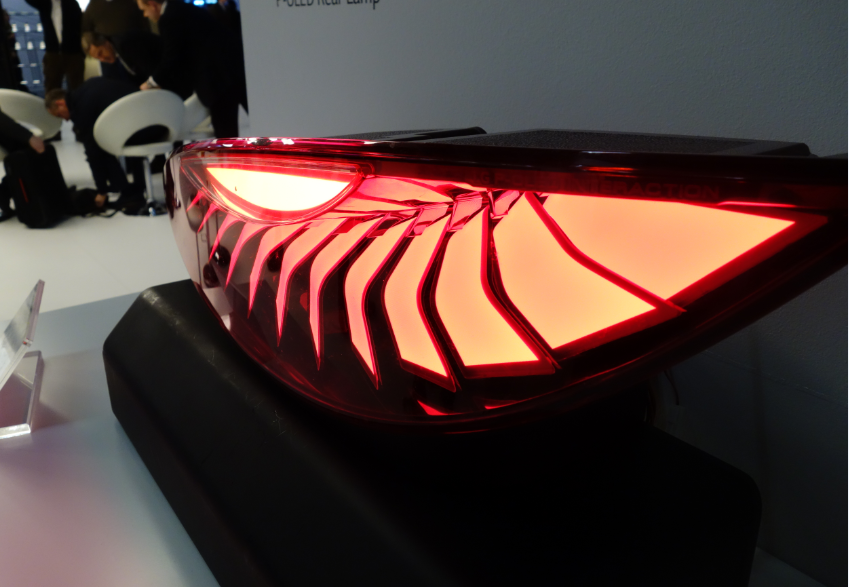 |
P-OLED tail lamp from LG Display.
|
|
|
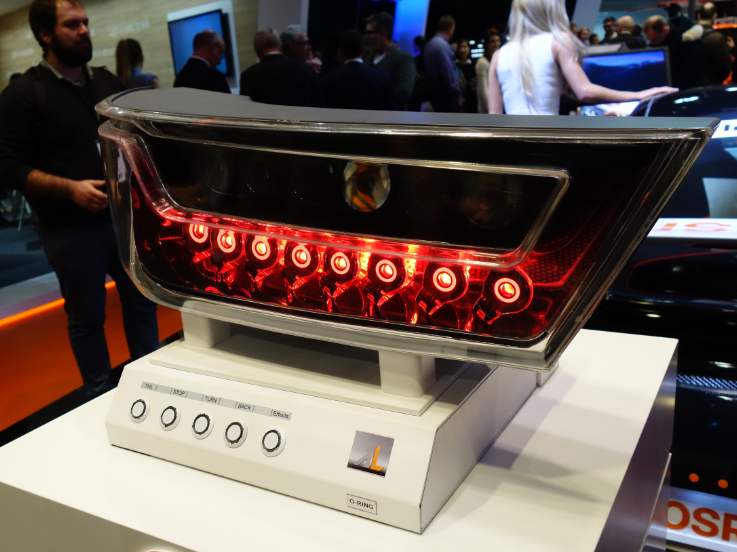 |
O-ring, OLED rear lamp from Osram.
|
Currently only BMW’s M4 GTS has adopted OLED tail lights from Osram. However, the vehicles is an extremely high class car with very limited sales volume. Should there be any quality issue with OLED tail light, the recall cost will be relatively low. Most of the automotive manufacturers have shown interest and are still in the R&D and testing stages. On-road safety and component reliability are undoubtedly priorities for all vehicles. Prouduct liability is also one of the issues OLED manufacturers need to overcome.
Editor's note: The unit of OLED price was revised as 1 cm2 in the forth paragraph.
(Translator: Emma Chang, Translator, LEDinsidehttp:// Editor: Judy Lin, Chief Editor, LEDinside)













